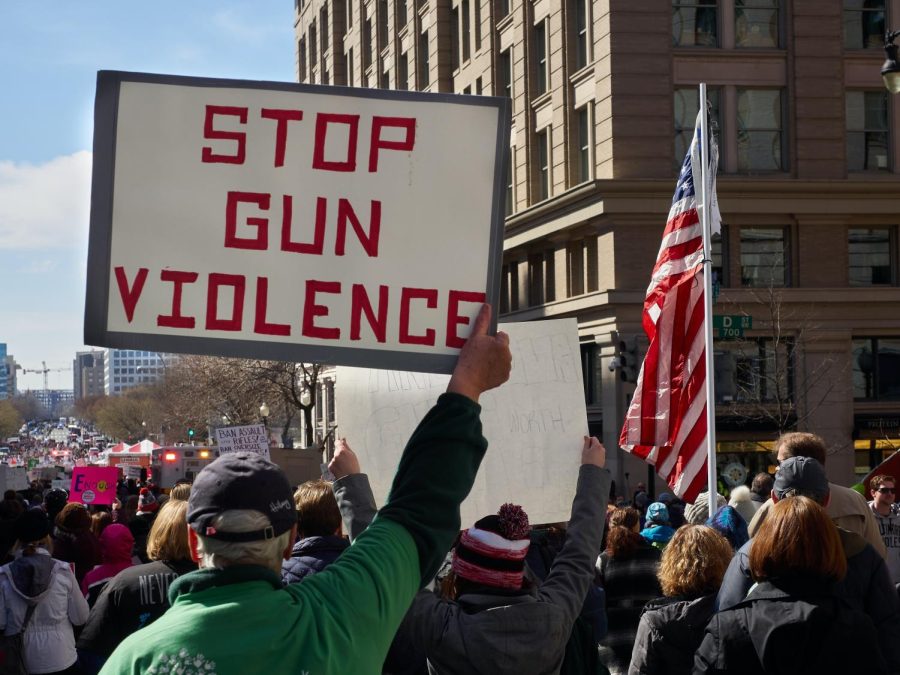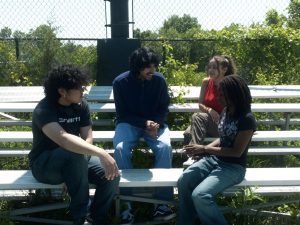The Right to Kill: Gun Violence’s Effect on Society
May 15, 2023
352,000. That is the reported number of students affected by school shootings since the tragedy at Columbine High School in 1999, according to John Woodrow Cox, Steven Rich, Linda Chong, Lucas Trevor, John Muyskens, and Monica Ulmanu of the Washington Post. This number is comparable to the population of Anaheim, California and stands as a chilling testament to the toll of gun violence. Despite this staggering number, there is still controversy over gun control and the second amendment. People often get lost in arguments about politics and government control when their concerns should lie solely in the safety of our nation.
School shootings only scratch the surface of gun violence in the US. According to Kiara Alfonseca from ABC News, in 2023 alone there have been over 13,900 deaths from gun violence, and roughly 184 instances of mass shootings in the US. Alfonseca notes that “of those who died from gun violence this year, 491 were teens and 85 were children.” These statistics are nothing short of shocking. To think that in a span of only five months there already have been over ten thousand deaths from gun violence.
On a daily basis we see so many heartbreaking stories in the media of innocent people falling victim to gun violence. According to Nouran Salahieh, Virginia Langmaid, and Eric Levenson for CNN, on April 15th, Ralph Yarl, a 16-year-old who was picking up his two younger brothers from a friend’s house happened to arrive at the wrong address and was shot twice by the homeowner, 84-year-old Andrew Lester, who claimed self-defense because “he thought the teen was trying to break in and was ‘scared to death’ due to the boy’s size.” Yarl, who stands just 5’8” and 140 pounds, was simply doing the right thing and knocked on the wrong door. Lester’s reaction almost cost Yarl, a high school junior and band leader in his school, his life. According to the Yarl family attorney, doctors consider Yarl’s survival a miracle, though they note that he might suffer severe long-term effects due to his injuries.
Yarl’s shooting is not the only example of this type of violence by homeowners. Emily Olson and Natalie Escobar of NPR reported on the death of 20-year-old Kaylin Gillis who was shot and killed by a homeowner in upstate New York on April 15th “after the car she was in accidentally went to the wrong address.”
Similarly, Olivia Land from the New York Post reported that on April 18th, Payton Washington and Heather Roth were shot after Roth accidently opened the wrong car door in a grocery store parking lot. After realizing her mistake, she closed the door and got into the correct vehicle. Just after this, the man from the other car approached the vehicle Roth was in and opened fire, injuring Roth and critically injuring Washington.
Think about it – these three acts of intense gun violence occurred in the same week to innocent people for meaningless reasons. The harsh truth is, it will happen again.
Safety is the most debated topic when discussing gun culture in the US. Gun owners say that having a firearm makes them feel safe and gives them a sense of security. They believe that you cannot truly protect yourself or your family without a gun. Saying that every gun owner is like the homeowner who shot Ralph Yarl or the people who shot the other victims is a wrong conclusion to make. However, the fact that there are multiple instances in which a gun owner shot an innocent victim forces you to wonder who or what the real threats to safety are.
Guns should be seen as nothing but a threat to our safety. Whether legally acquired or not, a person in possession of a gun or guns is inherently dangerous to society. By owning a gun, there is an innate intention to shoot someone, whether it is to protect one’s self or to inflict harm on others. So what can we do?
The abolishment of the second amendment–the right to bear arms–would do very little to the already present threat of guns, since there’s already such a large number of firearms in the US. As such, it is an impractical solution to infringe upon this right and try to take away every legal firearm.
The truth is, it all starts with people, most notably politicians. An abolishment of gun ownership might not stop gun violence, but implementing strict gun control would help prevent future instances of gun violence such as what I’ve noted.This will require actions like advocating for gun control legislation at the state level, educating people on the danger of guns, stricter background checks, and encouraging a higher emphasis on red flag laws. The most power you as an individual have is contacting your state and national representatives and doing everything in your power to enact change.
Government policy aside, the best thing we can do as a society is to strike at the root of violence: hate. Playing nice and holding hands with everyone might not fix all our problems. However, nearly every instance of gun violence comes from deep-rooted hatred toward a group or a person. Gang violence, school shootings, homicides, police brutality–each event stems from hate. Through promoting kindness and abolishing hate, we can build a safer future: a future where going to school isn’t threatening, a future where people can accidentally walk to the wrong house and leave unscathed, a future where people like Kaylin Gills would still be alive today. That’s the type of future that we as people can build.












































